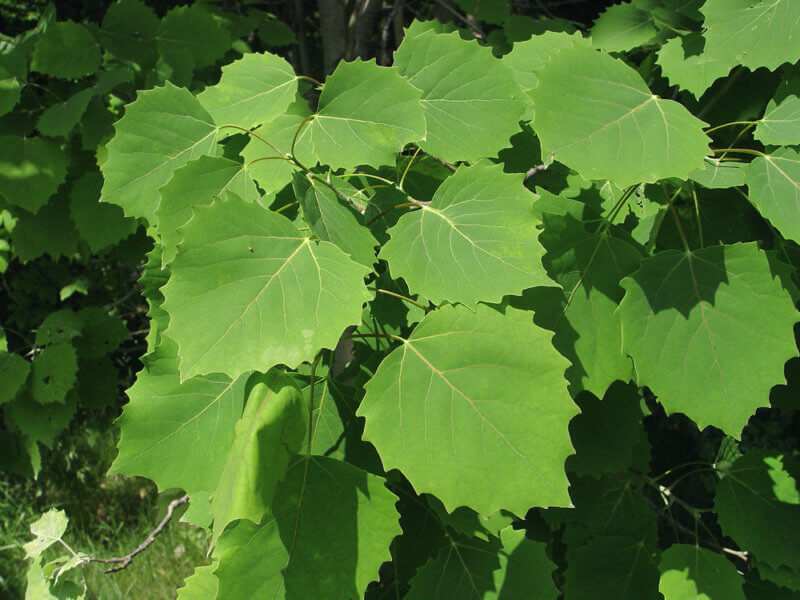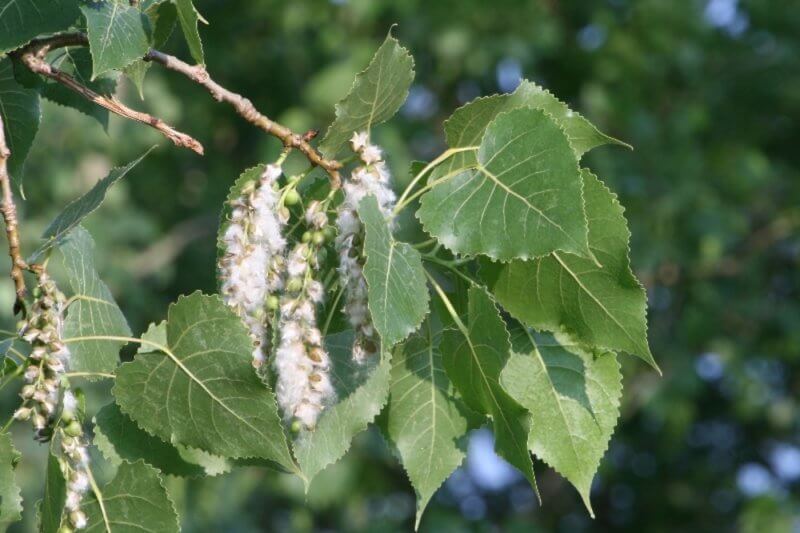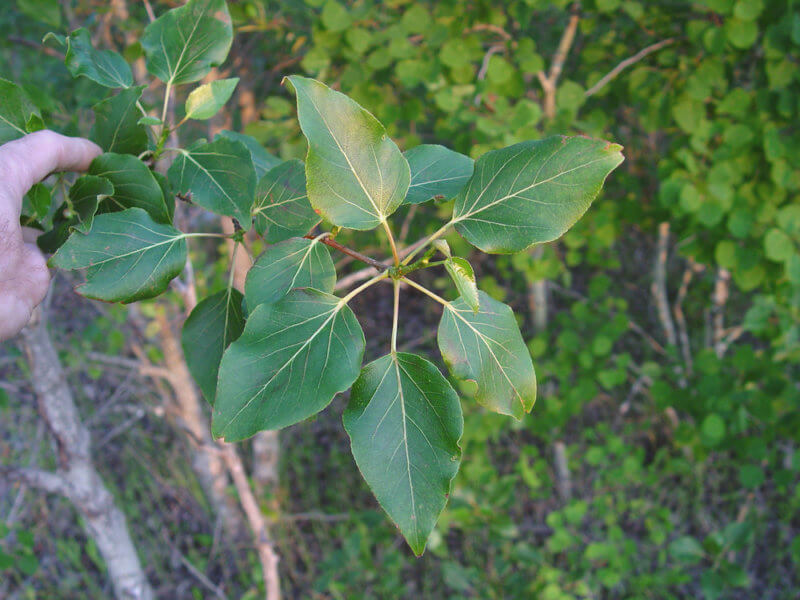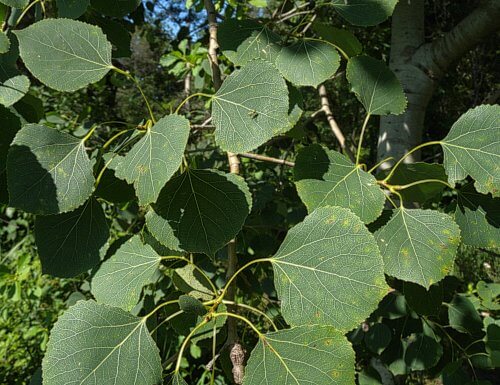Trembling aspen may be the most enigmatic of aspens
Aspens, also known as poplars or “popple,” are trees in the Populus genus. Vermont is home to four species of poplar: bigtooth aspen (Populus grandidentata), eastern cottonwood (Populus deltoides), balsam poplar (Populus balsamifera) and trembling or “quaking” aspen (Populus tremuloides).

While all the aspen species are unique, trembling aspen is perhaps the most enigmatic of the bunch. It is the most widely distributed tree in North America, with a range that stretches from Alaska to Newfoundland and south into Mexico. It is the only upland deciduous tree in parts of western North America and defines aspen and aspen-birch forests — some of the most common forest types in the lake states and some western states.
All the poplar species’ leaves “tremble” or “quake”— shimmering in the wind. They do so because the petiole – the stem that attaches leaf to twig — is flat. This trembling appears to be an adaptive quality: reducing leaf herbivory, lowering leaf temperature, lowering transpiration (the loss of water from leaves) and helping light reach lower parts of aspen crowns.

Trembling aspen is shade-intolerant, requiring nearly complete sunlight to establish. Aspen seeds are small, wind-borne and abundant, spreading far and wide across the landscape. While most of the seeds produced in a given year don’t land on an appropriate site, their mobility increases the chance that a lucky few will — usually the aftermath of a large disturbance.
Once established, aspens grow at a dizzying rate (for a tree) easily out-competing other, slower-growing species before declining and dying young (for a tree) — usually at around 60-80 years of age. Like white birch, trembling aspen is so intolerant of shade that its presence in your forest is almost certainly an indicator of a large natural or human-caused disturbance in the past. If you were to count the rings on one of your aspens, it would tell you about how many years ago that disturbance occurred.

Due to its short lifespan, trembling aspen is often considered a relatively ephemeral species in our forests. However, one of trembling aspen’s most interesting qualities is its resilience. Cutting an aspen tree often results in an abundance of fast-growing root sprouts, clones which may grow 4 or 5 feet tall in a single growing season. Especially in the western United States, this quality means that the life span of an aspen can be indefinite — it can continue to clone itself for generations. An aspen clone in Utah called Pando, or “the Trembling Giant,” is considered by some to be the oldest and most massive organism on Earth, covering more than 100 acres and estimated to be between 14,000 and 80,000 years old.
In Vermont, trembling aspen provides important habitat for many wildlife species, including several bird species in decline. It is important habitat for ruffed grouse, which use aspen stands of several different ages to complete different parts of their life cycle. Trembling aspen is also important for pileated woodpeckers, which forage for grubs and insect larvae in its soft wood, often creating cavities (holes) used by a huge variety of wildlife species for dens and nests.

While not commonly used in lumber, aspen wood is light, soft and pretty, often becoming purple-ish as it ages. It is a poor firewood, although sometimes used by maple sugarmakers for boiling sap. Throughout its range, aspen’s most common use is as pulp for paper. At present in Vermont, demand and prices for aspen timber and pulp are generally poor.
Due to its low market value, aspen is a species that I manage nearly entirely for wildlife. Creating some larger (at least 2-acre) canopy gaps where all or nearly all of the trees are cut creates potential habitat for the species, as well as a variety of other early-successional trees, plants and shrubs, and for the pollinators, birds and mammals that depend on them.
Cutting some larger aspen within these gaps will inspire them to produce clones, creating a vibrant young aspen forest relatively quickly. Outside of canopy gaps, I leave most aspen trees as legacy trees. These trees live out their natural lives, eventually declining, becoming riddled with cavities, dying and becoming dead wood on the forest floor. In life and in death, trembling aspen provides so many benefits to our forests.
(Ethan Tapper is the Chittenden County Forester for the Vermont Department of Forests, Parks and Recreation. See what he’s been up to, check out his YouTube channel, sign up for his e-newsletter and read articles he’s written on his website.)

